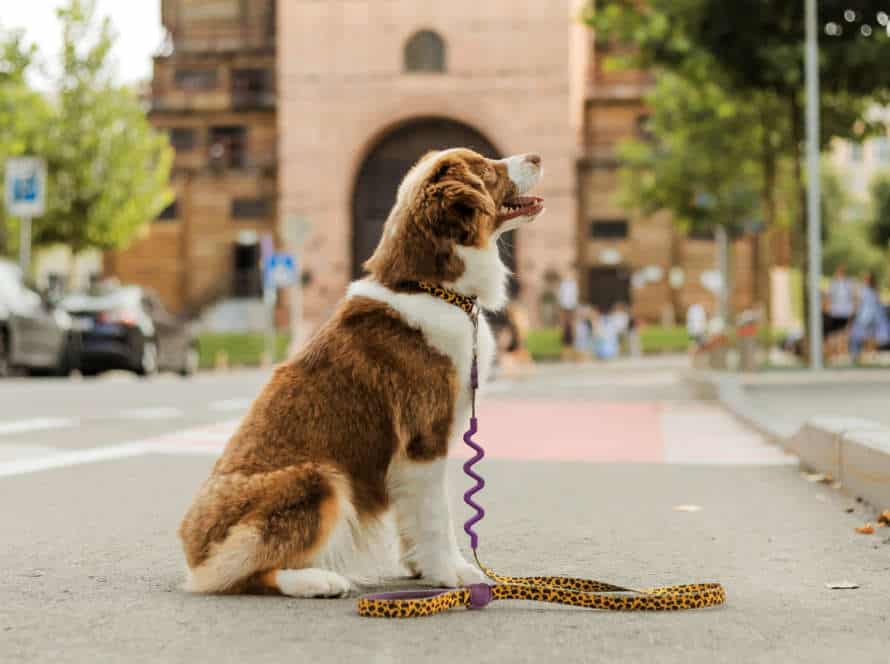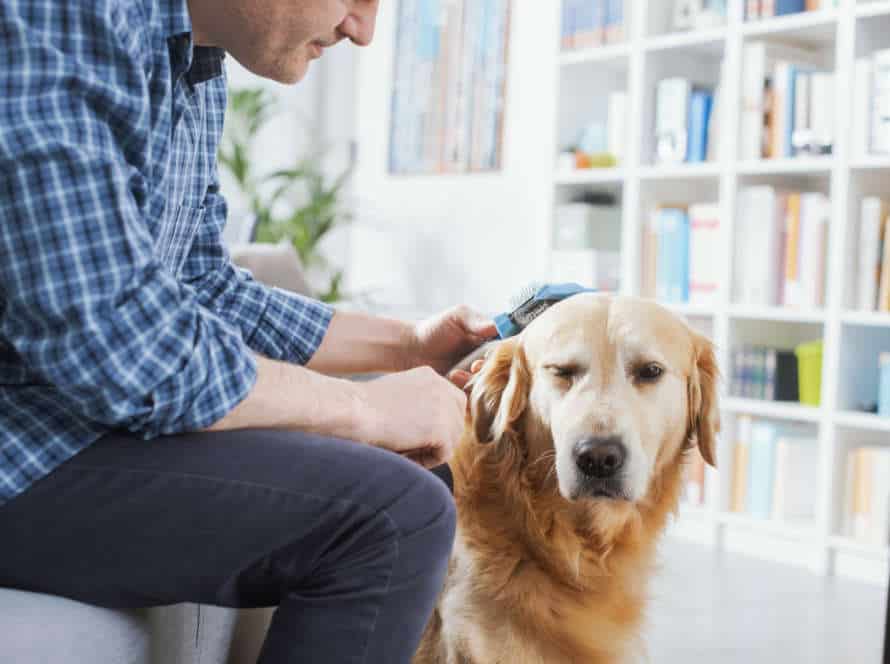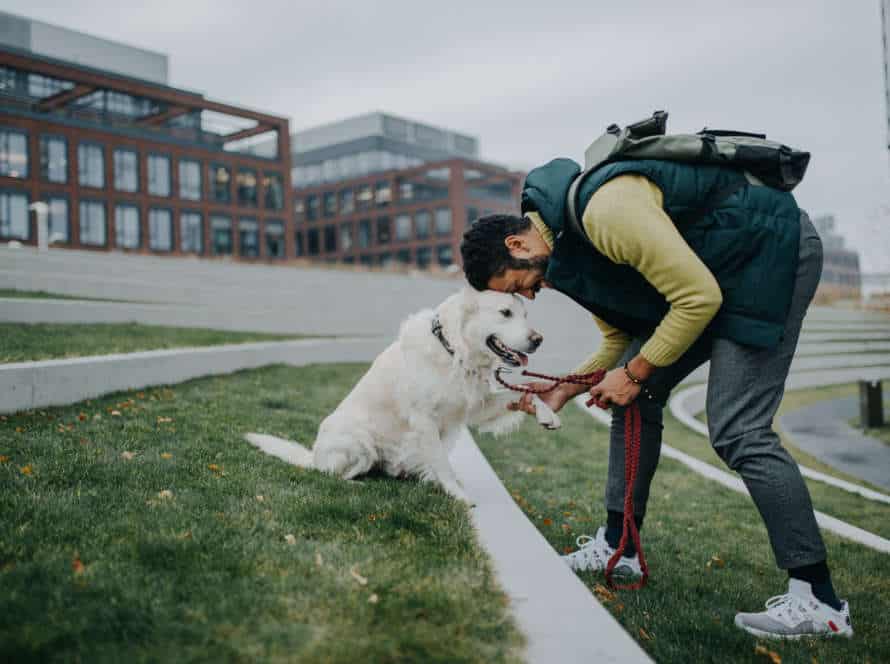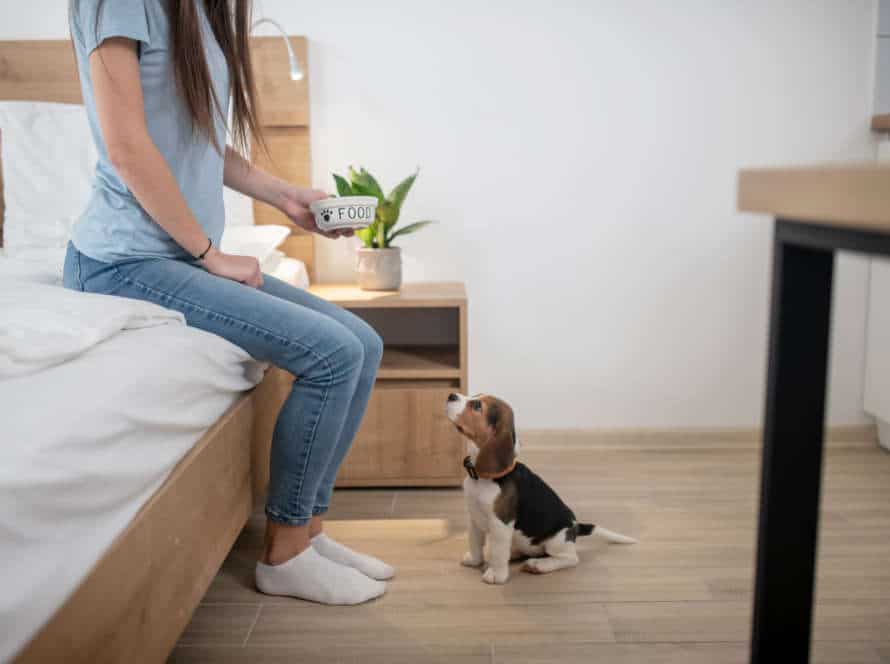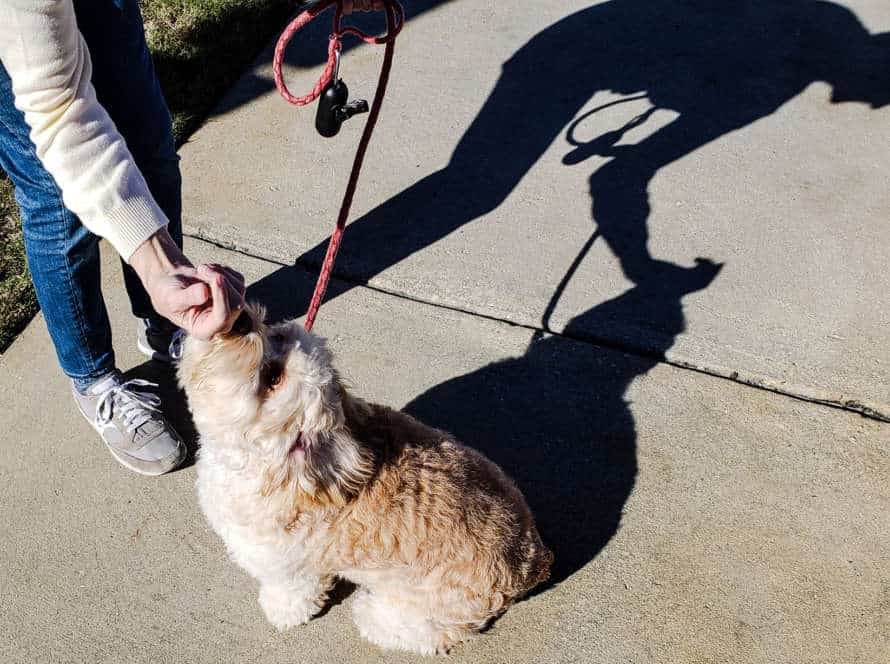Overcoming Common Loose Leash Walking Challenges
Strategies to Overcome Loose Leash Walking Challenges in Dogs:
Tackling loose leash walking can be a challenge for dog owners. But, with the correct strategies, conquering these troubles is possible!
To successfully defeat common issues with loose leash walking, try these strategies:
- Begin training inside or in a low-distraction environment.
- Reward your pup with treats and praises when they practice the right behavior while on a leash.
- Use a harness or halter to gain more control and avoid pulling.
- Ensure consistency and be prepared to change up techniques.
By following these strategies and being patient, overcoming loose leash walking troubles is easy! Have a pleasant walk with your pooch!
Understanding Canine Body Language
To succeed in loose leash walking, it’s vital to recognize how your pup communicates. Dogs express themselves by body language, facial expressions and vocalizations. Paying attention to these signals is the ticket to overcoming common issues with loose leash walking. Let’s get a better glimpse of canine body language!
Learn to listen to your dog
Listening to your pup and comprehending their body language is key for getting past everyday walking difficulties. Here’re some tips for understanding your pooch’s body language and enriching your strolls:
- Look out for your dog’s eyes, ears, and tail – they give most visible indications of their temper.
- Notice the leash tension – a tight leash may mean your dog’s stressed or worried about something, whereas a loose leash hints they’re content and calm.
- Rather than punishing them for their conduct during the walk, reward their good behavior with treats or praise.
- Use positive reinforcement to instruct your dog to stay by your side; use treats to keep them concentrated or take pauses when they get sidetracked.
By focusing more on your canine’s body language, you can grasp their needs better and make your strolls a more pleasant experience for both of you.
Identify common signs of anxiety or fear
Dogs can show various signs of fear or anxiety. Recognizing these signs is key to understanding their body language and responding properly. Common signs of anxiety in dogs include:
- trembling
- licking a lot
- big pupils
- slobbering
- and panting
Fearful dogs may:
- put their tails between their legs
- flatten their ears
- cower
- or move away
- They could also display aggressive behaviors such as growling or biting.
When walking your dog, it is important to recognize if they are anxious or scared. If they become tense, stop moving, or pull towards or away from something, they could be feeling anxious. To overcome this challenge, desensitization and counter-conditioning exercises can help your dog be more confident and relaxed on walks.
Understand the difference between a relaxed dog and an anxious one
Comprehending the contrast between a tranquil pup and an anxious one is essential for beating the usual loose leash walking predicaments. Here are some major pointers to differentiate between their body languages:
- Relaxed Dog: Tail slack, eyes soft, mouth open. Body loose and bouncy. Gait slow and constant.
- Anxious Dog: Tail tucked, body tense, ears pinned back. Excessive panting/drooling. Movements jerky/hesitant.
By understanding your pup’s body language, you can adjust your training techniques, and beat those common loose leash walking issues, like tugging, taking in distractions, and reactive actions. Don’t forget to give positive rewards for desirable behavior, and if needed, seek professional help.
Tips for Loose Leash Walking
Teaching your pup to walk on a loose leash? It’s an important skill! But, the process can be tricky. Here’s some tips to help you and your doggy out:
- Make sure your pup is focused on you while walking.
- Reward your pet when they walk calmly on a leash.
- If your pup pulls, stop right away.
- Create a positive and encouraging atmosphere.
- Don’t forget to praise them along the way!
Practice Consistency
Consistency is essential for training your pup to walk on a loose leash. Here’s how to tackle frequent predicaments:
- Utilize the same verbal cue. Examples: “heel” or “let’s go“.
- Keep the slack in the leash even.
- Have short, consistent training sessions. Train daily, just for a few minutes.
- Praise, treat, or play with your pooch to reward good behavior – and do it frequently.
- Be patient and relaxed. It may take a while for your dog to comprehend what you want.
By having patience and being consistent in your training, you’ll have an easier time with usual difficulties, like pulling or distractions. Enjoy a peaceful, more gratifying walk with your furry buddy!
Use Effective Training Tools
Training tools can be helpful to tackle common issues when walking on a loose leash. Let’s take a look at the five best ones:
- Harnesses: Clip-ons – front, back or no-pull – to reduce pulling, increase control and aid training.
- Leashes: Standard or adjustable, for the perfect amount of slack and control.
- Treats: Reward your pup for sticking close with tasty treats.
- Clicker: Use sound and reward to reinforce proper behaviour with a clicker.
- Collars: Martingale and slip collars are useful, but only with the help of an expert.
Don’t forget: these tools are simply aids. Consistent reinforcement, patience and consistency are key.
Reward Your Dog’s Good Behavior
Reward your pup for good behavior. It’s key for successful leash walking. Here are some tips and methods to help you:
- Pulling? Reward your dog when they stop, or when the leash is loose. Use positive reinforcement training to teach your pup to walk beside you.
- Distractions? If your pup gets distracted, use treats or a toy to get their focus back. Reward them when they’re walking beside you again.
- Inconsistency? Be consistent with rewards and expectations. Have a consistent reward system and stick to it.
Remember: Patience and practice are key. With time, and consistency, your pup can develop good habits and make walks more enjoyable.
Common Challenges & How to Overcome Them
Loose leash walking can be tough for any doggo. But with patience and consistency, it can be learned! Many distractions can be a hindrance when teaching pups to walk on a loose leash. From other pooches to people, rabbits, and squirrels – the potential for distractions is there.
Let’s explore the common challenges pet owners face when teaching their pup to walk on a loose leash, and how to overcome them:
Pulling on the Leash
Pulling on the leash is a common issue for dog owners. Here’s how to beat it:
- Excitement and Distractions: Start with short walks. Increase the distance as your pup learns to focus. Bring treats to reward good behavior. Practice in a quiet area before busier ones.
- Lack of Exercise: If your dog has too much energy, they’ll pull more. Make sure they get enough exercise before walks. Consider longer walks or play sessions.
- Inconsistency: Inconsistent training or rules can confuse your pup. Everyone who walks them should use the same training routine and commands.
By following these tips, you and your pup can enjoy leash walking without pulling.
Reacting to Environmental Stimuli
Loose leash walking is a great way to provide exercise and mental stimulation for your furry friend. But, many pet owners face difficulties training their dogs to walk on a leash without pulling. Here are some of the common challenges and how to overcome them:
- Pulling: When your dog pulls on the leash, stop walking and wait for them to return. Reward them when they do. Keep doing this until they understand that pulling won’t take them anywhere.
- Distractions: Dogs can get easily distracted by smells or other dogs while walking. Use positive reinforcement to keep your dog’s focus on you.
- Short attention span: Dogs can get bored quickly. Change your walking route and speed to keep them engaged.
Remember, each dog is unique and may need a different training approach. Always use positive reinforcement and make training a fun experience for your furry friend.
Lack of Focus
Lack of focus is a problem in loose leash walking. But, there are ways to help. Use positive reinforcement!
Start by choosing a treat your pup loves, like cheese or chicken.
Hold it close to their nose and say their name.
Walk a few steps with the treat near their nose. They should follow and focus on the treat.
Tell them to sit and give them the treat as a reward.
Do this several times during each walk. This will help them focus on you.
With practice, loose leash walking will be much easier!
Overcoming Distractions on Walks
Loose leash walking can be tricky due to distractions. Dogs may be drawn to people, animals or objects that they spot or smell. But don’t worry! Here’s how to handle distractions on walks. Take these steps to help your pup stay focused.
- Use high-value treats: Use treats that your dog loves and only gets during walks to keep their attention focused on you.
- Practice “look at me” command: Teach your dog to look at you on command. This helps them focus on you instead of distractions.
- Plan ahead: If you know your dog is easily distracted by certain areas or things, try to avoid those areas or bring extra-tasty treats to keep your dog focused.
- Use positive reinforcement: When your dog stays focused on you despite distractions, reward them with praise and treats. This reinforces good behavior.
- Be patient: Loose leash walking takes time and practice. Be patient with yourself and your dog as you work on reducing distractions during walks.
Choose your walking routes carefully
Choose your walking route carefully – it’s essential for keeping your pup focused and avoiding common challenges!
Steer clear of busy and noisy streets, where your pup may get distracted or overwhelmed. Instead, prioritize quiet, residential streets or paths in peaceful parks and nature reserves. Pick routes with fewer dogs and people to prevent distractions or upset.
Make it interesting by switching up the route every so often – if your pup enjoys variety.
Pro tip: Check the area for anything that may be a distraction, such as construction sites or heavy port traffic, and avoid it!
Use “Focus” Training Techniques
Focus training is a useful way to deal with distractions and leash walking difficulties. Try these three focus techniques on your walk:
- Look At Me – Place a treat close to your dog’s nose, then move it towards you. As they watch it, say “Look at me” and give them the treat when they make eye contact. Do this often while walking.
- Find It – Throw a treat a few feet away and say “Find it”. When they find it, use the command “Come” to bring them back. This encourages them to focus on you while walking.
- Stop and Go – Stop randomly during your walk, and say “Sit” or “Stay” while they look at you. Then say “Let’s go” to keep going. This teaches them to wait for your command to move.
Getting Your Dog’s Attention Back
Gaining back your pup’s attention is key to beating common loose leash walking issues and distractions when on a stroll. Here are some winning tricks:
- Use something yummy or a toy to catch your dog’s eyes and move their gaze.
- Establish a cue word like “focus” or “watch me” and make sure to use it to keep them looking at you.
- Train in a peaceful and low-distraction space before showing the exercises on a walk.
- Don’t use physical corrections or punishment, as this could weaken your bond and make them more easily distracted.
By training consistently and rewarding them positively, you can beat common distractions on walks and have a relaxed time with your furry pal.
Training Techniques
Loose-leash walking‘s a skill for both pup and person. Teaching dogs to walk on a loose leash may be tough, but with the correct training method, it’s a cinch! This article showcases the best training techniques to aid you and your dog in mastering the art of loose-leash walking quickly!
Clicker Training
Clicker training is a positive way to teach your pup new skills, like loose leash walking. This can be tough, though. Here are tips to help with clicker training:
- Start inside – Get your pup used to the process before going out.
- Be consistent – Train regularly and be patient.
- Reward good behavior – Give treats or praise when your pup walks properly on the leash.
- Teach “Leave it” – Use this command to show your pup not to pull or focus on something else.
- Ignore bad behavior – Don’t give attention to jumping or pulling.
- Short sessions – Keep each session under 10-15 minutes so your pup doesn’t get overwhelmed.
Use these techniques to get your pup perfecting loose leash walking – and have fun doing it!
Treat Training
Treat training is an effective way to train for loose leash walking. Here are some tips for success:
- Use treats your dog loves.
- Give the treat when your dog displays good walking behavior, like walking on a loose leash or looking at you.
- As your dog becomes more used to loose leash walking, slow down giving treats.
Loose leash walking can sometimes be tough. Pulling, distractions, and difficulty focusing can all be overcome with treat training. It gives positive reinforcement and makes your dog more willing to listen.
Pro Tip: If your pup is easily distracted, start in a quiet place with no distractions. Then work up to more challenging environments.
Leash Training Exercises
Leash training is a must for dog training. It teaches dogs to walk on a leash without pulling and conquer loose leash walking issues. Here are some tips:
- Find a calm, distraction-free spot for practice.
- Use treats or kind words as positive reinforcement when the pup walks without pulling.
- If your dog pulls, stop and wait for them to settle before continuing.
- Change directions regularly. Reward pup when they stay close.
- If the dog still pulls too much, use a front-clip harness or head harness.
Patience and regular practice is key. With time and effort, you can help your pup overcome loose leash walking difficulties and have a great time on walks.
Frequently Asked Questions
Q: How can I get my dog to stop pulling on the leash?
A: One technique is to stop moving forward whenever they pull and only continue walking when they come back to your side. Consistency is key; you must be patient and refrain from moving forward until your dog stops pulling.
Q: My dog gets easily distracted and pulls toward interesting smells. What can I do?
A: Try teaching your dog a “leave it” command so when they become overexcited by a smell, it’s easier to redirect their attention towards you. Another option is to keep high-value treats in your pocket to reward good behavior and keep your dog focused on you.
Q: My dog constantly weaves back and forth while walking. How can I prevent this?
A: This can be a sign that your dog is bored or not getting enough exercise. Give your dog ample opportunities to release pent-up energy and stimulate their mind through playtime, dog parks, and other outdoor activities.
Q: My dog hates wearing collars or harnesses. What should I do?
A: Start by desensitizing your dog to the equipment slowly. Offer high-value treats while presenting the collar/harness and allow them to sniff and investigate it. Gradually increase the time your dog is wearing it and try associating it with activities they enjoy, such as walks or playtime.
Q: How long will it take to teach my dog to walk on a loose leash?
A: Every dog is different and will require varying amounts of time and patience. Consistency is crucial, and it’s important to practice daily in short sessions. Some dogs may take weeks or months to learn, while others may take longer. Don’t give up! Your dog will eventually learn and become a great walking companion.



